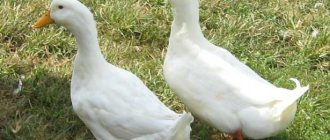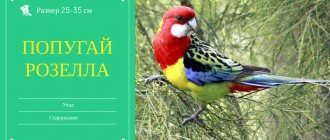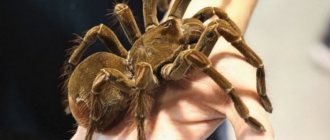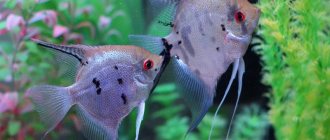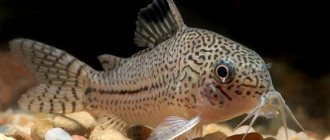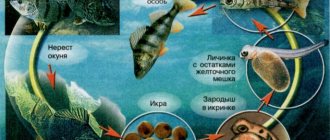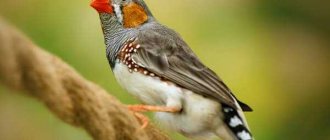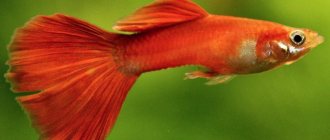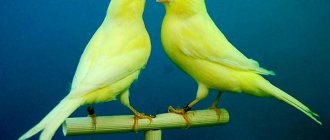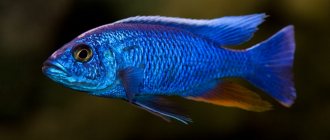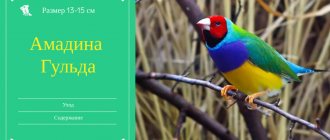Small Artemia crustaceans are needed as valuable, nutritious food for young and adult underwater inhabitants. The benefits of live food in easily digestible protein, the survival rate of fry increases, growth and development improves, promotes bright coloring and spawning. Aquarists buy ready-made crustaceans or grow them at home.
- 1 Description and natural habitat
- 2 Advantages and disadvantages
- 3 Mr. Tail recommends: how to feed underwater pets with Artemia nauplii
- 4 Methods of breeding Artemia 4.1 Simple option
- 4.2 In the incubator
- 4.3 In the aquarium
Description and natural habitat
Artemia (Artemia salina) is a branchial crustacean, pink in color, adults have 3 eyes, 11 pairs of legs. Males have an enlarged pair of claws, which they use as gripping organs in mating.
Artemia grows up to 12-18 mm, lives 4-6 months. Crustaceans are heterosexual; in the absence of males, females can reproduce by parthenogenesis (a form of sexual reproduction of organisms in which eggs develop into an adult organism without fertilization). Males have claws on their heads, while females have an egg sac containing up to 200 eggs. The blood of crustaceans contains hemoglobin, just like vertebrates.
Photo gallery of Artemia fish food:
Artemia goes through more than one stage of development, in any of them it is suitable for feeding aquarium inhabitants:
- Cysts (eggs) contain a lot of protein, ideal for fry and small fish.
- Nauplii are small crustaceans that have recently emerged into the world.
- Adults - for medium and large underwater inhabitants.
There are two types of eggs - thin-walled (hatch immediately) and thick-shelled (remain dormant for a long time). They hatch into small individuals with one light-sensitive eye, the length of the nauplii is 0.5 mm. Later, two more eyes appear. Artemy cysts can withstand boiling and very low temperatures. The shell protects from frost in winter and heat in summer.
Crustaceans never sleep; for their vital functions they need constant wakefulness. These creatures are very ancient, living on Earth for more than 100 million years.
In nature, Artemia prefers salty reservoirs, located mainly in resort areas. Crustaceans form healing mud; they can withstand high concentrations of salt. Their food is green algae and phytoplankton. The distribution area is extensive - water bodies of the USA, Spain, Italy, Russia, Kazakhstan, Ukraine.
Maintenance and care
To obtain high-quality fish food, you must follow some recommendations, otherwise the crustaceans will not grow or will quickly die:
- The optimal temperature is 20-26 °C.
- The water should be salty: sea or table salt is suitable, but in no case iodized (iodine is harmful to crustaceans). Salt concentration is 30-35 grams per liter of water.
- The water needs to be renewed weekly (about a quarter). Replacement requires salted water. Also, in case of evaporation, it is worth adding the missing amount.
- Crustaceans need a filter with a sponge and aeration.
When keeping and breeding Artemia, the most crucial moment is feeding. In nature, Artemia feeds by filtration on microalgae and small protozoa. Suitable for them at home:
- specialized food;
- spirulina (ground);
- baker's yeast;
The yeast is pre-diluted with a small amount of water and sprinkled on the surface of the water. You need to feed the crustaceans 2-3 times a day in small portions.
Water after feeding should “self-purify” within 48 hours. If this does not happen, then there is a lot of food for artemia, and they do not have time to eat everything. You will have to replace a third of the water, and give a smaller portion at the next meal.
Advantages and disadvantages
There are pros and cons to live fish food. Artemia salina has the following benefits:
- accelerates the growth and development of fry;
- increases the survival rate of young animals;
- moves quickly, which is necessary for predatory inhabitants;
- unpretentious, you can propagate at home and quickly grow the required number of crustaceans;
- the aquarium pollutes to a minimum;
- her eggs for breeding are available and inexpensive.
Contains 100 gr. crustaceans: proteins – 57, fats – 18, carbohydrates – 5. In 100 g of nauplii: proteins – 48, fats – 15, vitamin B12. Neons, swordtails, goldfish, and catfish are fed with Artemia.
Disadvantages of live food:
- time and equipment required for home breeding;
- there is a danger of contamination of the liquid with bacteria, parasites, infections and the risk of poisoning aquarium inhabitants with low-quality food;
- high calorie content of food, which can lead to metabolic disorders and obesity of residents of the home pond.
For beginning aquarists, experts advise taking frozen Artemia. The product is purchased in specialized stores. It retains all nutrients, vitamins, microelements and there is no risk of infection. As a result of freezing, the bacteria die.
Part two. Growing Artemia
Stage No. 1. Buy Artemia cysts
Cysts are Artemia eggs with resting embryos that are dormant, waiting for favorable conditions. Cysts are incredibly viable, allowing them to be transported over long distances. They are typically sold in pouches, which can be purchased at pet stores or online (such as eBay) like regular bagged fish food. One sachet is enough.
Stage No. 2. Place the cysts in water
Pour the cysts from the bag directly into the water. If the temperature and salinity are normal, young brine shrimp will appear within 24 hours.
Step #3: Watch the Artemia Grow
The crustaceans grow very quickly; in just a week they will go from the cyst stage to adult crustaceans capable of reproduction. As a result, under favorable conditions, you can get a huge population and an almost inexhaustible source of live food for fish.
Mr. Tail recommends: how to feed your underwater pets Artemia nauplii
Nauplii are given to the fry of spawning fish. A menu of Artemia alone is not recommended; it is better to use it for complex feeding in combination with plant foods.
Overfeeding fish can lead to illness, death, and inflammation of the stomach. The crustaceans are fed in small doses. All the food must be eaten, otherwise the aquarium will turn sour, the ammonia level will increase, and harm its inhabitants.
The fry require daily food; they are given eggs in the first days of emergence, but only decapsulated (outside the capsules). Before use, the cysts are filled with water for 20 minutes and washed well.
Reproduction
Artemia fish food, a photo of which can be seen in the material, reproduces offspring in the following way. Eggs fertilized by males are concentrated in a special sac on the female's abdomen. After some time, nauplii larvae hatch from them.
As environmental conditions worsen, the method of reproduction changes somewhat. The female lays eggs in a substrate in which the embryos are reliably protected by a cocoon containing nutrients. In this form, nauplii are able to remain viable for an indefinite period. As soon as conditions improve, larvae hatch from such a sac. In this case, a minimum number of individuals from the clutch survive. However, this method of reproduction allows artemia to maintain the population.
Methods of breeding Artemia
Experienced breeders grow food for their fish themselves. There are several ways.
Simple option
Take table salt, a container with a lid, two plastic tubes, and a compressor.
Salt is diluted in water (0.5 liters per 20 grams) and future crustaceans are poured into it (half a teaspoon per 0.5 liters of liquid). The jar is closed with a lid, two holes are made in it for the tubes. One is lowered to the bottom, the second does not reach the water. Put a sprayer on the long end, and a compressor on the short end. Small individuals appear after 36-40 hours, if the temperature is not lower than +24...+25 °C.
Before collecting, turn off the compressor and wait for the crustaceans to settle to the bottom. Drain the contents through a thick cloth, Artemia remain on it.
In the incubator
First, dry eggs are soaked in a 5% salt solution. Wash under running water and put into an incubator. It's easy to do. Take two plastic bottles. Cut off the lower part with the bottom of one, and the neck of the second. The first is inserted neck down into the second. The tube with the sprayer and the compressor hose is placed in the upper container. Pour water at a temperature of +26...+29 °C without chlorine, add salt (2 tablespoons per 3 liters) and a pinch of soda. Turn on the compressor and pour out the eggs. Provide round-the-clock lighting. Catch the larvae using a hose from a dropper.
In aquarium
These two methods yield few crustaceans. To breed more Artemia, you need an aquarium from 10 to 40 liters. Additional equipment: heater, thermometer, filter with sponge, sea salt (300 g per 10 liters of water), siphon, refractometer, flashlight, lamp. Artemia eggs are purchased at the store; they are packaged in sealed bags.
Choose a place for the tank that will not be exposed to direct sunlight. Step by step steps:
- Pour in water and add sea salt.
- Install the filter.
- A compressor is connected to it.
- Connect to the network.
- Place the water heater.
- They put in a thermometer.
Required acidity – 8-9 pH, egg density – 2.5 g per liter, temperature +20…+26 °C, salinity – 18 ppm.
The composition of the salt is checked with a refractometer. Then the parameters are monitored for a day, if they have not changed, the eggs of future crustaceans are poured out. They hatch after 20 hours.
Keep a large bottle of salt water prepared in advance. Every week it is replaced by 25%. Once a week, wash the filter sponge thoroughly or replace it with a new one. When cleaning, it is more convenient to shine a flashlight so that the crustaceans gather near the light and do not interfere. Regularly check the salt concentration, liquid purity, and temperature.
How to prepare brine shrimp
After a week, the small cysts will grow and become excellent food for adult aquarium fish. Artemia nauplii are used as food for the fry, which are caught on the second day after the eggs are placed in the water. To catch live brine shrimp, you need to turn off the filter and wait 10 minutes. During this time, empty cysts will begin to float on the surface, unhatched ones will settle to the bottom, and living ones will float in the middle layers of the water.
To catch breeding crustaceans, shine a flashlight in one direction. As soon as the crustaceans arrive, catch them with a net. The finer the mesh on the net, the more artemia you can catch. After washing the caught animals with running water, put them into an aquarium with fish. Artemia will begin to swim, and the fish will hunt for them.
If there is a lot of brine shrimp, you can freeze it. To do this, catch it and package it in bags. Then put it in the freezer. Before feeding the fish, break off the required piece and give it to your pets. You can catch nauplii by straining the water through a nylon stocking. After that, put them on a glass or bag and put them in the freezer.
As you can see, breeding brine shrimp at home is not difficult, just a small financial investment and your time.
Feeding and catching Artemy
Small individuals need food; special mixtures and greens, milk powder, egg powder, and spirulina are suitable. Feed several times a day, in small portions. If the water becomes cloudy, replace it, and next time reduce the amount of food.
Live food is caught after two days, for fry and adult fish after a week.
The filter is turned off, and after a few minutes the cysts with empty shells appear on the surface. Live Artemia remain in the water column. First, shine a flashlight so that they gather in one place, and drain the liquid. A strainer with large holes is used to catch large crustaceans, and a strainer with small holes is used to catch nauplii. If there are a lot of them, freeze them for future use in the freezer.
Organization of the incubator
The best option for breeding fish food (brine shrimp) is a spacious container made of plexiglass. Water is poured here, in which salt is dissolved in the amount of one tablespoon per liter of liquid. The incubator is provided with high-quality round-the-clock lighting. To do this, you can use lamps with a power of at least 15 W. Such lighting sources are placed along the walls of the container, which also allows you to heat the water. If the room in which crustaceans are grown is poorly heated, it is recommended to place the incubator in an insulated box.
Another solution that allows you to grow a significant number of Artemia nauplii is to use a regular plastic bottle with the bottom cut off. The latter must be moved upside down. A sprayer should be installed in place of the plug. You will need several such bottles. Both containers must be filled with an aqueous solution of table salt. The sprayer installed at the necks must be periodically supplied with air. This will prevent the brine shrimp eggs from settling to the bottom. You should also heat the water. Its temperature should not fall below +25 °C.
Storage and types of prepared feed
Pet stores offer a wide range of universal foods:
- Artemia+ – containing salt and cysts, for quick removal of crustaceans;
- dried, under vacuum, stored for a long time;
- eggs without shell, ready to eat immediately;
- frozen – to maintain the health of adult fish;
- liquid food with Artemia and vitamins;
- freeze-dried - with proteins, fiber, polyunsaturated fats.
The mixtures are usually stored in the refrigerator for two days, unless other conditions are indicated on the packaging.
Methods for increasing the germination of Artemia
There are several solutions, the use of which makes it possible to increase the number of nauplii that hatch from eggs. Freezing of seed material is considered one of the most effective methods. Excellent germination is observed after storing Artemia eggs in the freezer at a temperature of about –25 oC. It is recommended to leave nauplii in this state for several months, placing them in a saturated saline solution. After the specified period has passed, the eggs are removed from the refrigerator and left for a couple of days at room temperature. As a result, the embryos will be completely ready for effective incubation.
Another way to increase the germination of brine shrimp (fish food) does not involve the use of a freezer. The solution requires treating the nauplii embryos with non-concentrated hydrogen peroxide. The eggs are placed in a 3 percent solution of the chemical for about 30 minutes. Next, the seed material is thoroughly washed and sent to the incubator. A certain number of eggs can be dried and left for crustacean breeding in the near future.
The threat of extinction of Artemia
Natural populations of Artemia still existed in Germany in the 19th century, but, unfortunately, industrialization caused the almost complete destruction of the habitats of the crustaceans. Probably the last natural habitat of Artemia is a salt mine in Lower Saxony. In these places there are 3 temporary reservoirs in which small populations of brine shrimp live.
But even this population is under threat of extinction due to ongoing economic activities.
Ponds in San Francisco where Artemia are bred.
Artemia - prehistoric crustaceans
These crustaceans are truly prehistoric, but their appearance has not changed. Artemia are true living fossils.
They are compatriots of the huge stegosaurs and brachiosaurs. But unlike the latter, brine shrimp have survived to this day.
These tiny crustaceans survived the disaster that destroyed the lizards. To this day, brine shrimp live and are about 1.5 million years old.
Artemia.
Adviсe
- To raise the brine shrimp to adulthood after the nauplii hatch, transfer them to a separate aquarium with salty, warm (25°C) dechlorinated water.
- Use an airlift filter in the incubator. It does not attract crustaceans.
- You can get larvae (nauplii) at any time of the year. It is enough to place the cyst in the necessary conditions.
- Use yeast to feed crustaceans.
- If spawning is planned in 3-4 weeks, then let the brine shrimp eggs spend the entire period in the freezer. Before incubation, keep them at room temperature for 2-3 days. This is to multiply the germination results.
- Just do not give the emerging fry too many nauplii, otherwise the ones that are not eaten will grow and eat the fry themselves.
- Once decapsulated, the eggs will keep for 14 days in an airtight container in the refrigerator. They can be frozen and used for feeding as needed. They will no longer be able to reproduce.
(Visited 3,395 times, 3 visits today)
